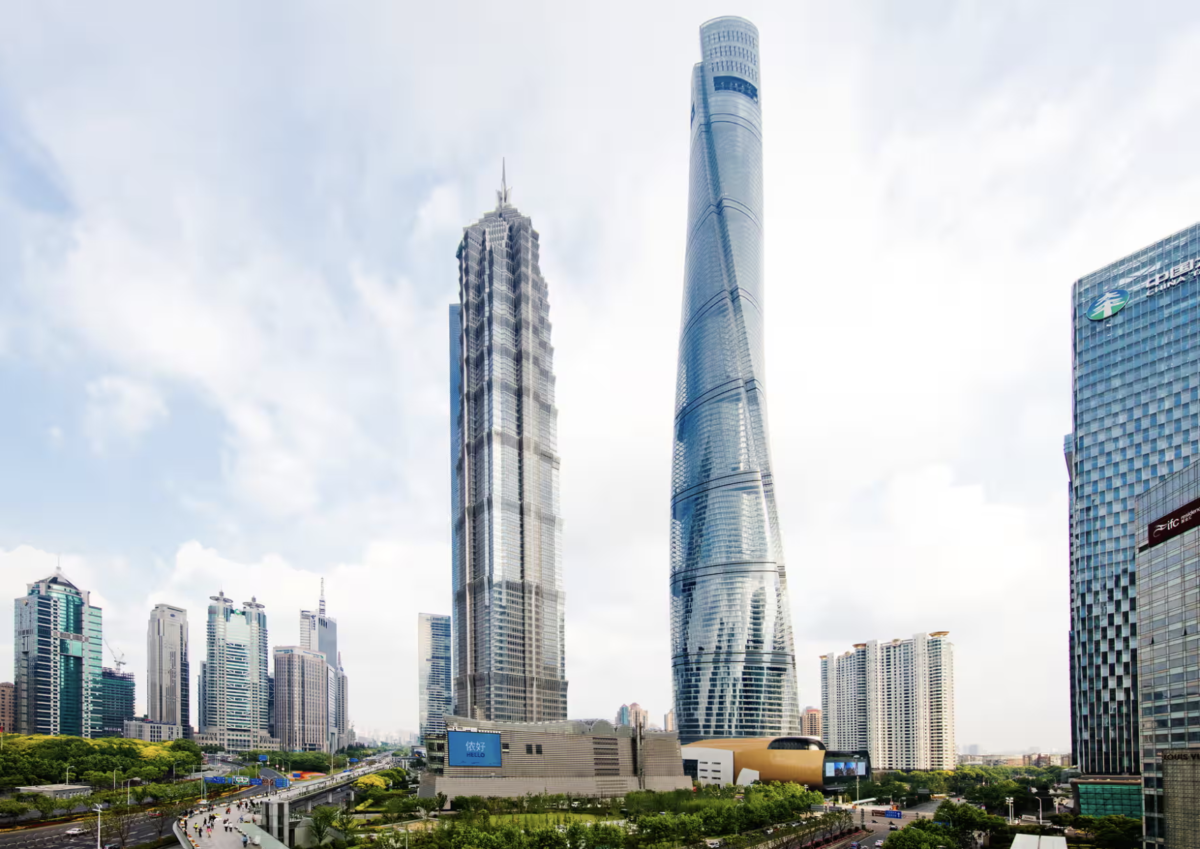Outside Shanghai Tower is a plaque that reads ‘Leadership in Energy and Environmental Design,’ displaying its acronym ‘LEED’ and certification level, ‘Platinum.’ This environmental claim, however vague, is convincing because of its professional design and position on the second-tallest building in the world. But what does it really mean?
The U.S. Green Building Council, or USGBC, developed LEED as a privately-run nonprofit in 1993 and implemented what would become one of the most popular green building rating systems. With over 80,000 projects around the world, LEED sets standards for cost-saving and energy-efficient buildings. According to these specific standards, the USGBC doles out point-based credits that count toward the full certification. A building needs to earn 40 points to achieve the minimum certification, with additional points counting towards a silver, gold, and platinum level.
Some features, such as ‘indoor water use reduction,’ can score upwards of 6 points. Other features, such as ‘integrative analysis of building materials,’ only count as 1 point. From ‘bicycle facilities’ to ‘reduced parking’ to ‘lighting control,’ developers can take on projects and gain points in their scorecard. While some features actively reduce the building’s impact on the environment, cutting down the number of parking spaces outside the building and installing a bike rack on the sidewalk are also options for scoring points towards LEED certification. Each level of the certification gives the owner many options for acquiring points. While many credits for the LEED certification are truly beneficial for the environment, the system makes it possible for developers to pick and choose the cheapest, easiest features to put in place and still score the same amount of points. Thus, bike racks are installed and parking spaces are blocked off.
Millions of people around the world work, live, and learn in LEED certified buildings. The fundamental question is whether this certification is as reputable as it seems. The building certification allows companies to label themselves as “green,” but what is the reality behind these points? The truth is that a ‘point’ does not necessarily equal a step towards sustainability. For example, the installation of bamboo flooring scores points in the race to platinum level, but this design decision also results in structural failure. Environmental benefits from this renewable material may be overstated because the point system does not take into account the effectiveness and longevity of building materials. Yet, the developer earns points towards the building’s ‘green’ certification.
In order to start the process of certifying a building, computer models must project that the structure will meet a certain threshold for its silver, gold, or platinum level. However, once a building becomes occupied, the developers are not held accountable to these standards. This process leaves room for builders to easily take advantage of the system for a press release and shiny plaque outside the building.
The average LEED-certified buildings with gold and platinum ratings only deliver a 15-20% energy use reduction, with 28-35% of buildings using more energy. Critics worry that even the best case scenario for LEED-certified buildings does not accurately reflect the urgency of climate change. Energy consumption from urban development makes up 50% of United States carbon emissions and 40% of raw materials used globally. Given these statistics, the standards for lower energy use and CO2 reductions must be higher for green buildings to counteract the damaging effects of construction. In light of recent technological advances and cost reduction for clean energy options, the USGBC has the tools to implement a more aggressive, yet attainable, building certification. The price of solar energy, for example, has decreased by 60% since 2010, but LEED standards have not been upgraded to demand more renewable power.
A common argument in favor of the LEED system is that the features provide economic as well as environmental benefits. On average, LEED-certified buildings boast a 17% increase in occupancy rates and a 20% decrease in maintenance costs compared to buildings with traditional construction, allowing governments or corporations to save money while also reaping the benefits of a ‘green’ public image.
When questioned about potential faults in his system, LEED founder Robert K. Watson confessed to throwing “a few gimmes in there.” So, while LEED does have proven benefits, many of its flexible and ineffective standards are cause for concern, and suggest a need to improve the system. To fulfill USGBC’s purpose of promoting sustainability, LEED must eliminate opportunities for misuse and provide a path for recertification. LEED’s vast influence, noble purpose of environmental protection, and compelling points system makes it an entity that cannot be overlooked in this game of green.
Sources
Faulkner, A. (2016, November 4). Losing the LEED. Retrieved from https://digital.hbs.edu/platform-rctom/submission/losing-the-leed/
Green Buildings Could Save Our Cities. (2017, January 24). Retrieved from https://www.nationalgeographic.com/environment/urban-expeditions/green-buildings/benefits-of-green-buildings-human-health-economics-environment/
Kats, Greg. (2018, May 24). LEED must be updated to address climate change. Retrieved from https://www.greenbiz.com/article/leed-must-be-updated-address-climate-change
LEED Certifications: Buildings: Sustainable Practices: The Office of Sustainability. (2020). Retrieved from https://www.uml.edu/sustainability/practices/buildings/leed-certifications/
Roy, Avik. (2014, May 1). LEED-Certified Buildings Are Often Less Energy-Efficient Than Uncertified Ones. Retrieved from https://www.forbes.com/sites/realspin/2014/04/30/leed-certified-buildings-are-often-less-energy-efficient-than-uncertified-ones/#5dcd3f1d2554
What is LEED? (2020). Retrieved from https://www.usgbc.org/help/what-leed

